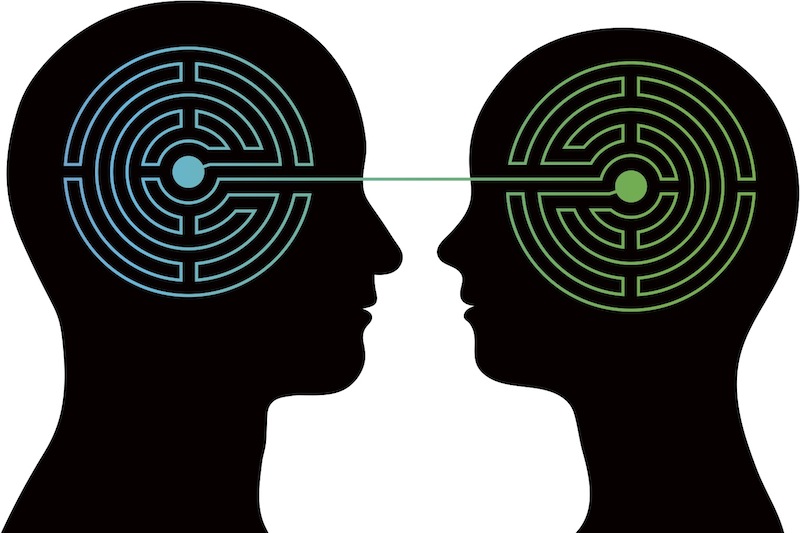The Power of Hyperempathetic Connection
In today’s fast-paced and often disconnected world, empathy is an increasingly valued and sought-after quality. It allows us to understand and share the feelings of others, fostering deeper connections and promoting a more compassionate society. However, a subset of individuals possess an extraordinary level of empathy known as hyperempathy.

Hyperempathy goes beyond regular empathy, as it involves an intense and heightened ability to feel and understand the emotions of others. In this article, we will explore the concept of hyper-empathy, its characteristics, the science behind it, its benefits and challenges, its role in the workplace and mental health, its connection to social justice, its potential dark side, and its influence on creativity. Understanding hyperempathy and its implications, we can better navigate our relationships, society, and personal well-being.
Understanding Hyperempathy: Definition and Characteristics
Hyperempathy can be defined as an extreme form of empathy in which individuals have an intense ability to feel and understand the emotions of others. It goes beyond simply recognizing and sympathizing with someone’s feelings; hyper-empathic individuals experience those emotions themselves. This heightened sensitivity allows them to connect deeply with others on an emotional level.
Characteristics commonly associated with hyperempathic individuals include a strong intuition about others’ emotions, a tendency to absorb the feelings of those around them, a heightened sense of compassion and understanding, and a deep desire to help others. They may also have a strong aversion to conflict or negative emotions, as they can be overwhelming.
Hyperempathy in everyday life can be seen in individuals who are deeply affected by the suffering of others. They may cry when they see someone else crying or feel physically ill when they hear about a tragic event. They may also have a natural ability to put themselves in someone else’s shoes and understand their perspective, making them excellent listeners and sources of support.
The Science Behind Hyperempathy: How It Works in the Brain
Empathy is a complex process that involves various brain regions working together. The key brain regions involved in empathy include the prefrontal cortex, which is responsible for understanding and regulating emotions, the anterior cingulate cortex, which is involved in emotional processing and empathy, and the mirror neuron system, which allows us to understand and imitate the actions and emotions of others.
Hyperempathy differs from regular empathy because it involves an overactivation or hypersensitivity of these brain regions. This heightened activity leads to a more intense experience of others’ emotions and a stronger emotional resonance. Research studies have shown that hyper-empathic individuals have increased activation in these brain regions when exposed to emotional stimuli compared to individuals with regular levels of empathy.
The Benefits of Hyperempathy: Enhancing Relationships and Communication
Hyperempathy can have numerous benefits in relationships and communication. Firstly, hyper empathic individuals are often seen as compassionate and understanding, making them highly valued friends, partners, and colleagues. Their ability to connect deeply with others on an emotional level allows them to provide genuine support and empathy.
In terms of communication, hyper-empathic individuals excel at active listening and understanding others’ perspectives. They are skilled at picking up on nonverbal cues and can often sense when someone feels down or needs support. This ability to empathize and communicate effectively can lead to stronger relationships, improved teamwork, and enhanced collaboration.
An example of hyperempathy in action can be seen in a therapy setting. Hyperempathic therapists can create a safe space for their clients where they feel truly understood and supported. This deep empathy can facilitate healing and growth in the therapeutic process.
The Challenges of Hyperempathy: Managing Overwhelm and Boundaries
While hyperempathy can be a valuable trait, it also comes with its challenges. One of the potential downsides of hyperempathy is the risk of becoming overwhelmed by the emotions of others. Hyperempathic individuals may find it difficult to separate their feelings from those they are experiencing from others, leading to emotional exhaustion and burnout.
Hyperempathic individuals can employ various strategies to manage overwhelm and set boundaries. First, they need to practice self-care and prioritize their emotional well-being. This may involve taking breaks from emotionally demanding situations, engaging in activities that recharge them, and seeking support from loved ones or professionals when needed.
Setting boundaries is also crucial for hyper-empathic individuals. They must recognize when taking on too much emotional burden and communicate their limits to others. This can involve saying no when necessary, asking for help, and establishing clear relationship boundaries.
Hyperempathy in the Workplace: Leveraging Empathy for Success
Hyperempathy can be a valuable asset in the workplace. It allows individuals to understand the needs and emotions of their colleagues, fostering a positive and supportive work environment. Hyperempathic leaders are often seen as approachable and understanding, which can enhance employee morale and engagement.
Examples of successful hyperempathic leaders include Oprah Winfrey and Barack Obama. Both have demonstrated a deep understanding of others’ experiences and have used their empathy to connect with people on a profound level. Their ability to empathize has not only contributed to their success but has also allowed them to make a positive impact on society.
To leverage empathy for success in the workplace, hyper-empathic individuals can focus on building strong relationships with their colleagues, practicing active listening, and using their understanding of others’ emotions to motivate and inspire their team members. Creating a supportive and empathetic work environment can enhance teamwork, collaboration, and overall productivity.
Hyperempathy and Mental Health: Coping Strategies and Self-Care
Hyperempathy can have a significant impact on mental health. The intense emotions experienced by hyper empathic individuals can lead to emotional exhaustion, anxiety, and even depression. Hyperempathic individuals need to develop coping strategies and prioritize self-care to maintain their mental well-being.
Coping strategies for hyperempathic individuals may include practicing mindfulness and grounding to stay present and centered, engaging in activities that bring them joy and relaxation, and seeking therapy or counseling to process their emotions and develop healthy coping mechanisms.
Self-care is crucial for hyper empathic individuals. This may involve setting aside time to recharge, engaging in activities that promote self-reflection and self-compassion, and surrounding themselves with supportive and understanding individuals who validate their experiences.
Hyperempathy and Social Justice: Empathy as a Tool for Change
Hyperempathy can be a powerful tool for promoting social justice. Individuals who possess hyperempathy deeply understand marginalized groups’ experiences and are driven to create change. They are often at the forefront of social justice movements, advocating for equality and fighting against injustice.
Examples of hyper-empathic individuals making a difference include activists like Malala Yousafzai, who fights for girls’ education, and Bryan Stevenson, who works to reform the criminal justice system. Their ability to empathize with the struggles of others has fueled their passion for creating a more just society.
Empathy plays a crucial role in creating a more just society by allowing individuals to understand the experiences of others and take action to address systemic inequalities. Hyperempathic individuals can use their empathy as a catalyst for change by advocating for marginalized communities, raising awareness about social issues, and supporting organizations that promote equality.
The Dark Side of Hyperempathy: Empathy Burnout and Compassion Fatigue
While hyper-empathy can be a powerful and positive trait, it also carries the risk of empathy burnout and compassion fatigue. Hyperempathic individuals may find themselves constantly absorbing the emotions of others, leading to emotional exhaustion and a decreased ability to empathize.
Hyperempathic individuals should prioritize self-care and set boundaries to prevent burnout and compassion fatigue. This may involve taking regular breaks from emotionally demanding situations, seeking support from loved ones or professionals, and engaging in activities that recharge them.
It is also important for hyperempathetic individuals to recognize when they need to seek support themselves. They may benefit from therapy or counseling to process their emotions and develop healthy coping mechanisms. By taking care of their well-being, hyperempathetic individuals can continue to use their empathy sustainably and impactfully.
Hyperempathy and Creativity: Using Empathy to Fuel Artistic Expression
Hyperempathy can be a powerful source of inspiration for artistic expression. Artists and writers who possess hyper-empathy often draw on their deep understanding of human emotions to create works that resonate with others on an emotional level.
Examples of hyperempathic artists and writers include Frida Kahlo, whose paintings reflect her emotional struggles and the pain of others, and Maya Angelou, whose poetry captures the essence of the human experience. Their ability to tap into the emotions of others allows them to create deeply moving and relatable. art
To use empathy to enhance artistic expression, hyper-empathic individuals can focus on exploring their opinions and those of others. They can use their heightened sensitivity to capture the nuances of human experience in their art, whether through visual arts, writing, music, or any other form of creative expression.
Nurturing Hyperempathy: Practices for Cultivating Empathy and Connection
Hyperempathy can be nurtured and developed through various practices. Firstly, individuals need to cultivate self-awareness and emotional intelligence. This involves recognizing and understanding their own emotions and being able to perceive and interpret the feelings of others accurately.
Practicing empathy in everyday life is also crucial for nurturing hyperempathy. This can involve actively listening to others, understanding their perspectives, and showing compassion and support. By regularly engaging in empathetic behaviors, individuals can strengthen their ability to connect with others on a deep emotional level.
Building connections with others is another important practice for nurturing empathy. This can involve seeking diverse perspectives, engaging in meaningful conversations, and actively participating in communities or organizations that promote empathy and understanding.
IHyperempathyis a valuable trait in today’s society that can foster deeper connections, enhance relationships, promote social justice, and fuel artistic expression. While it comes with challenges, such as managing to overwhelm and setting boundaries, hypereempathic individuals cansignificantly iimpact the world around them. By understanding hyperempathy and its implications, we can cultivate empathy in our own lives and contribute to a more compassionate and understanding society.











